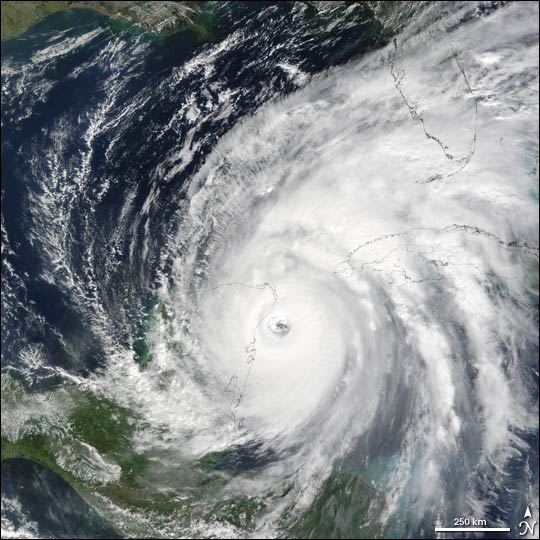Scientists Play ‘The Weather God’
By | Oct 25, 2007

In a path-breaking development, scientists at the Massachusetts Institute of Technology (MIT) and others, are soon going to be in a position where they play God with the weather.
So-called hurricane modifiers aim to steer dangerous weather patterns off course and to weaken hurricanes in the hope of preventing disasters like Hurricane Katrina. Scientists have devised a plan to reduce hurricane wind speeds by having a plane drop soot into near-freezing clouds at the top of a hurricane, causing it to warm.
“If they’re done in the right place at the right time they can affect the strength of the hurricane,” Moshe Alamaro of MIT said. “We’re starting with computer simulations, and then will hopefully experiment on a small weather system.”
Scientists at Hebrew University of Jerusalem announced last month that they similarly simulated the effect of sowing clouds with microscopic dust to weaken a hurricane. Those findings were presented at a conference in Trieste, Italy, in which the team demonstrated that dust dropped into the lower part of Hurricane Katrina would have reduced wind and diverted its course.
But the breakthrough could have legal consequences. Researchers are girding for potential lawsuits brought by towns that might bear the brunt of a hurricane diverted from a big city. The MIT researchers hired a risk management professor to give them legal advice. “The social and legal issues are daunting,” Alamaro said. “If a hurricane was coming towards Miami with the potential to cause damage and kill people, and we diverted it, another town or village hit by it would sue us. They’ll say the hurricane is no longer an act of God, but that we caused it.”
The damage done to New Orleans in 2005 has spurred two rival teams of climate experts, in America and Israel, to redouble their efforts to enable people to play God with the weather.
Under one scheme, aircraft would drop soot into the near-freezing cloud at the top of a hurricane, causing it to warm up and so reduce wind speeds.
Computer simulations of the forces at work in the most violent storms have shown that even small changes can affect their paths – enabling them to be diverted from major cities.
Hurricanes form when air warmed over the ocean rises to meet the cool upper atmosphere.















